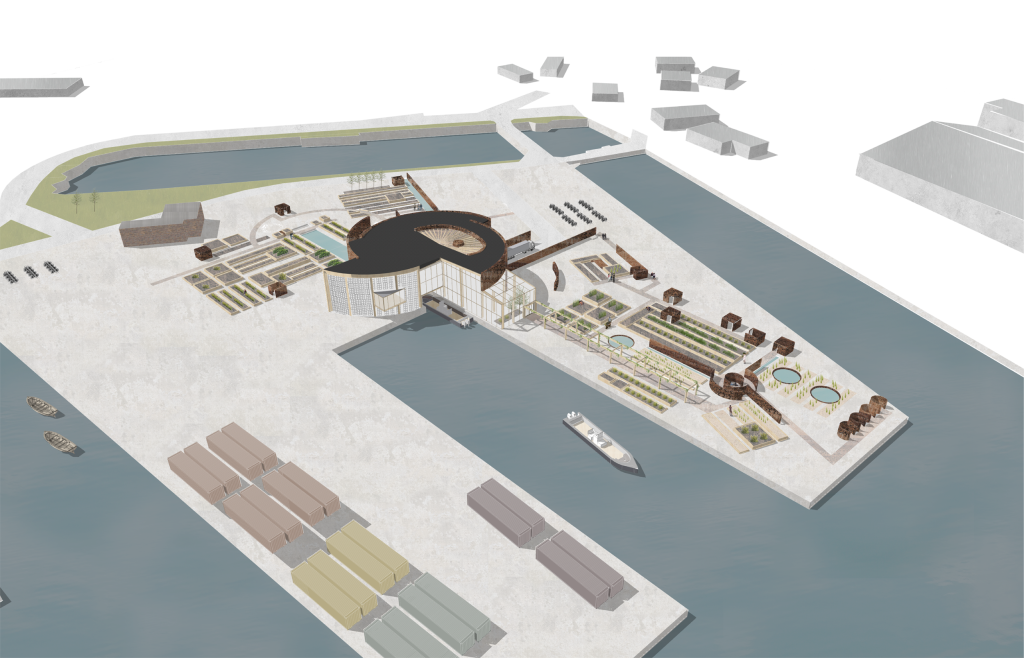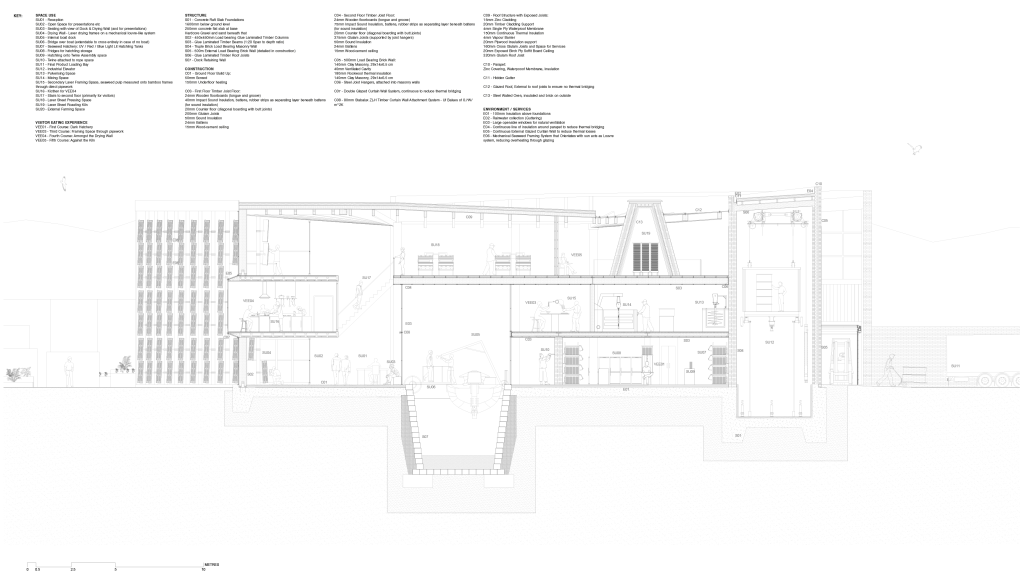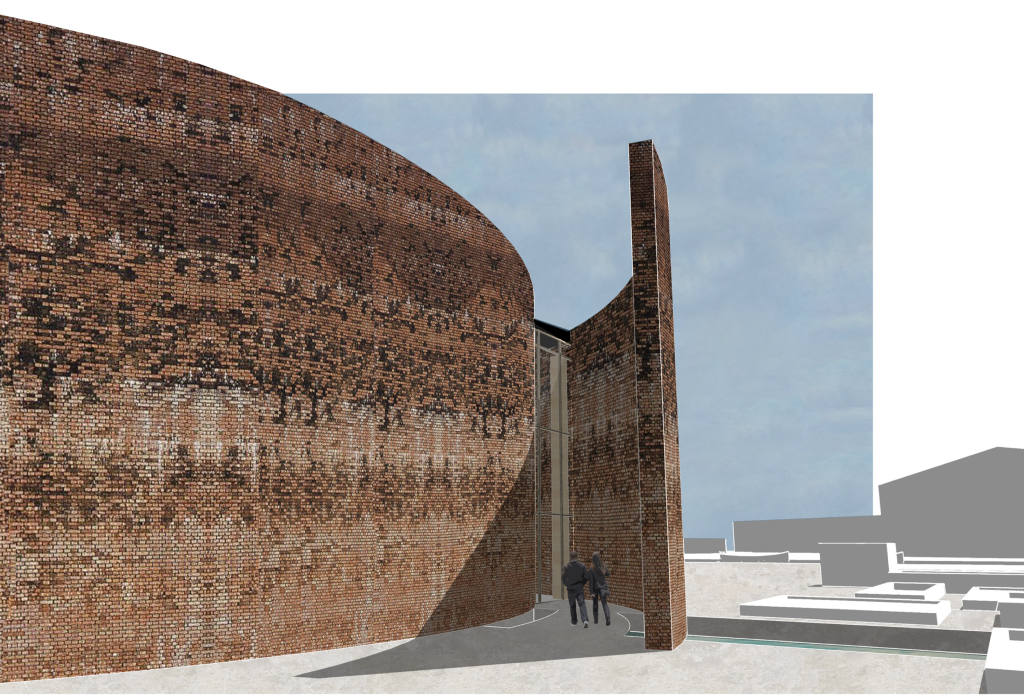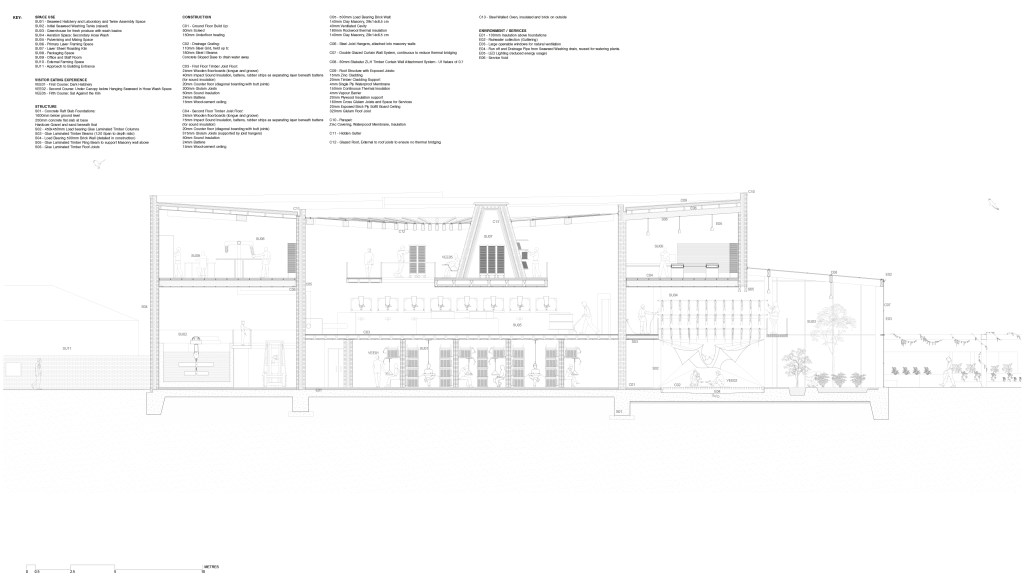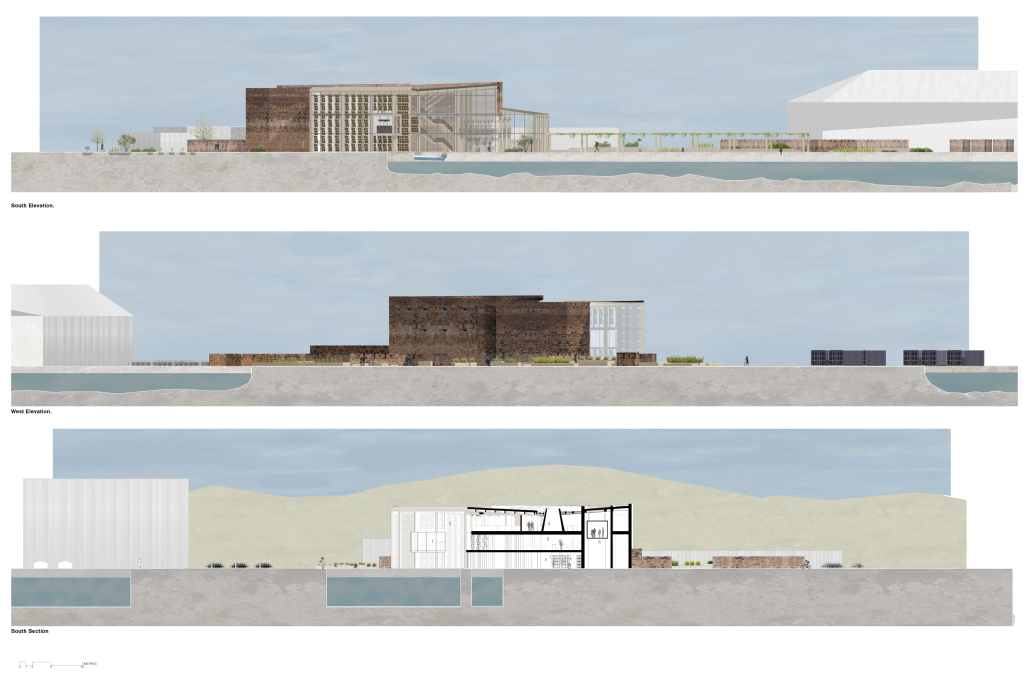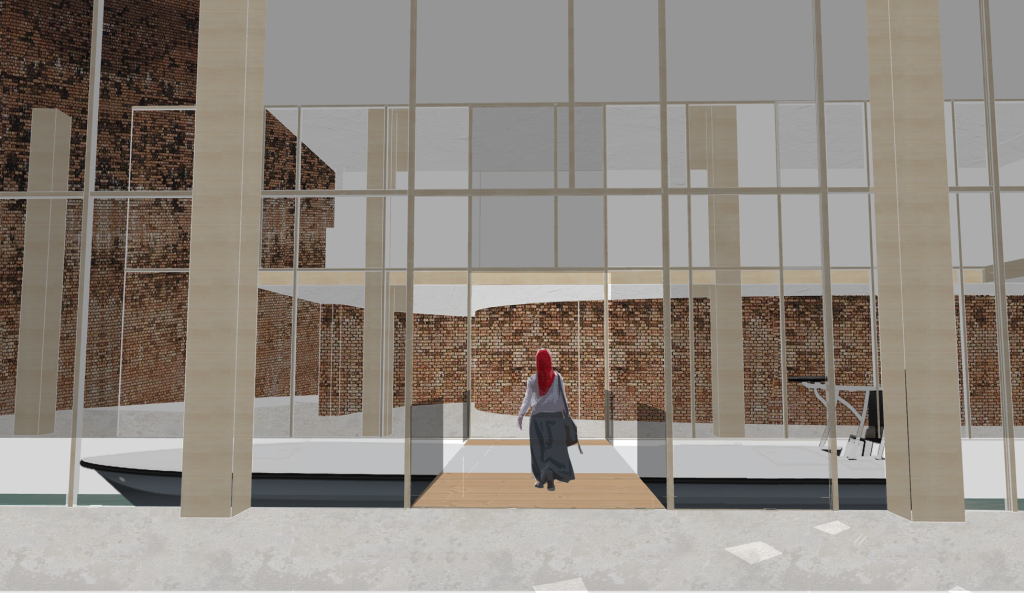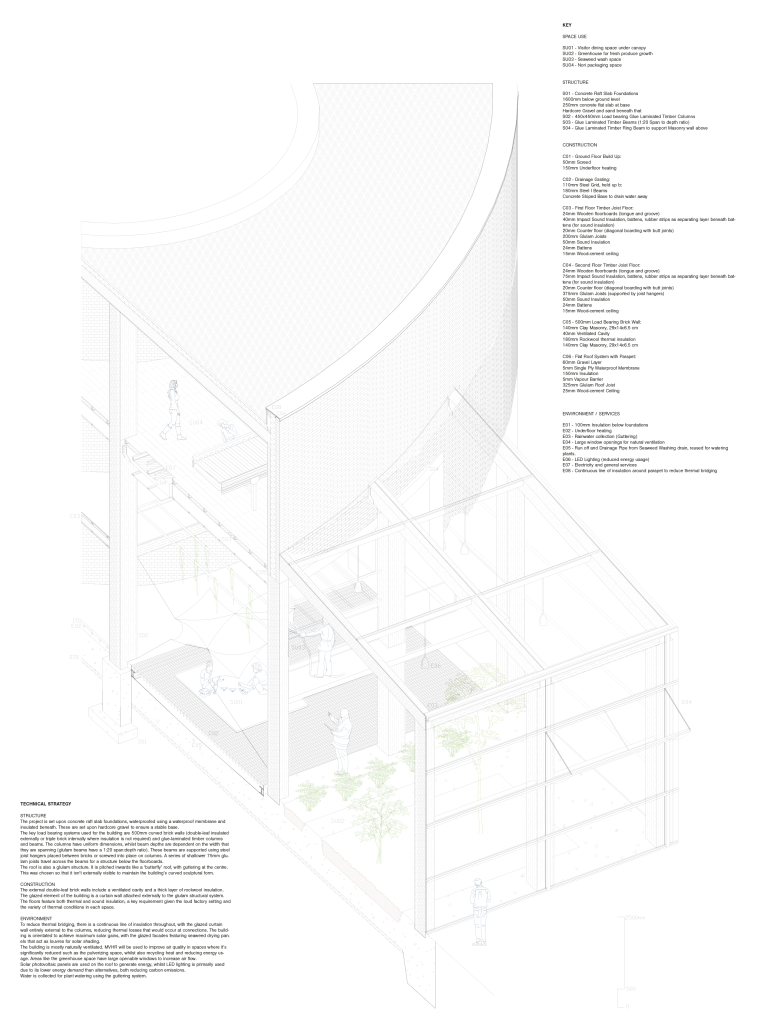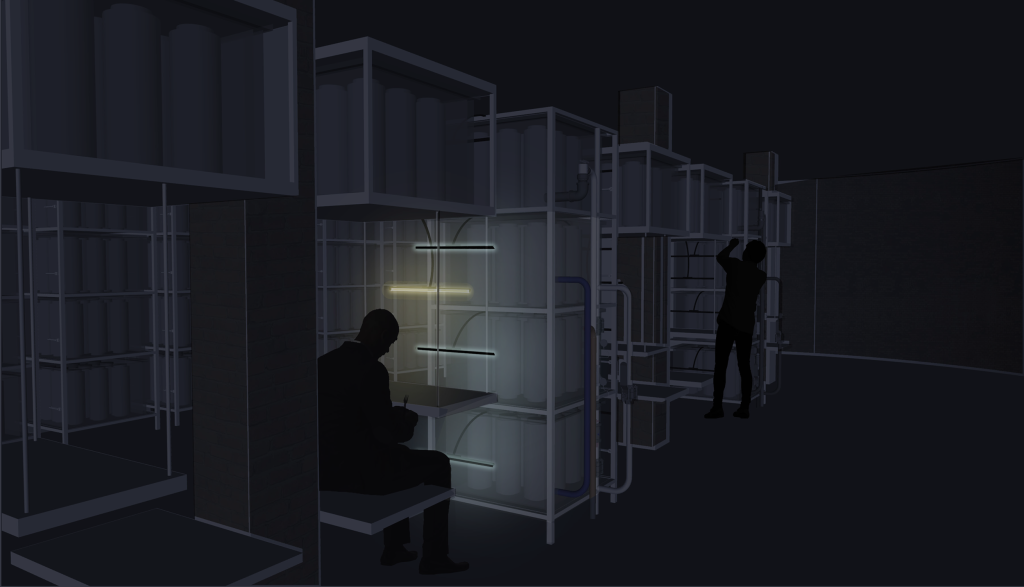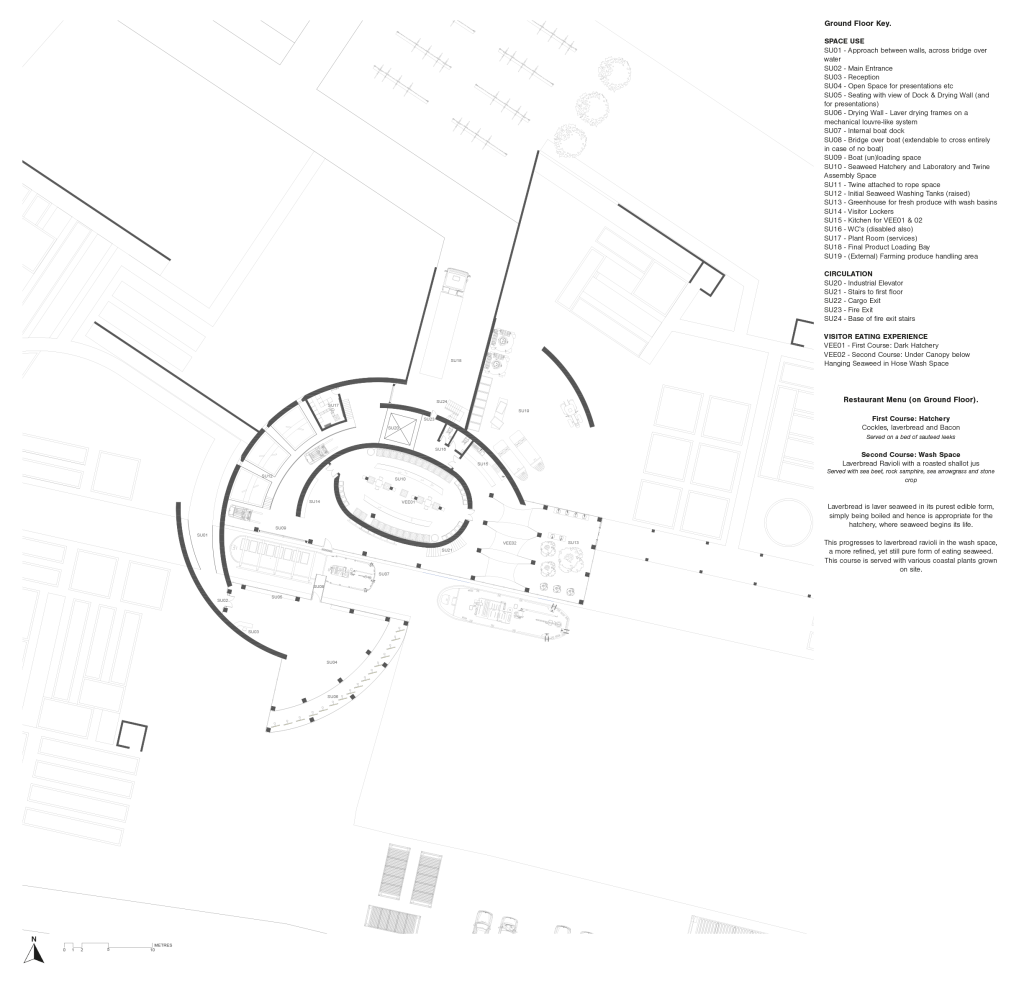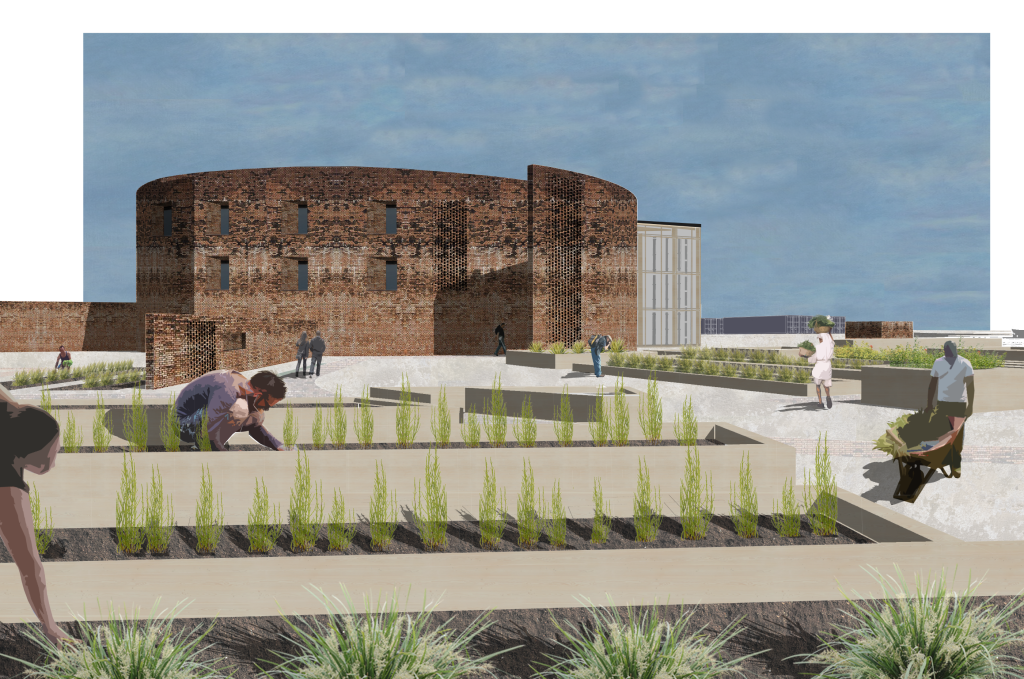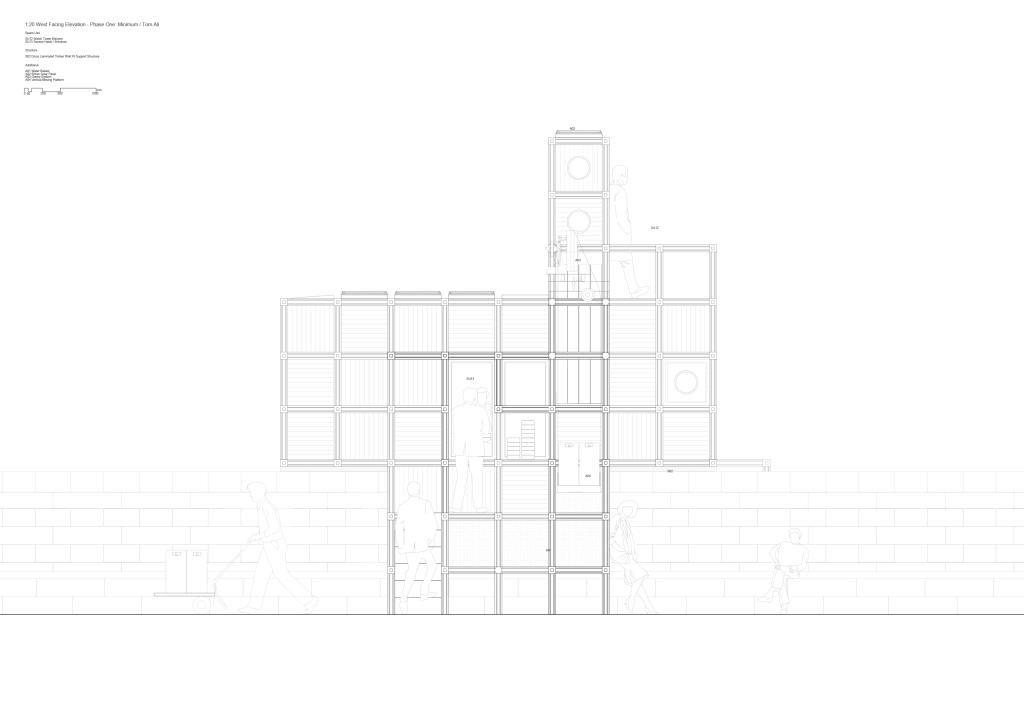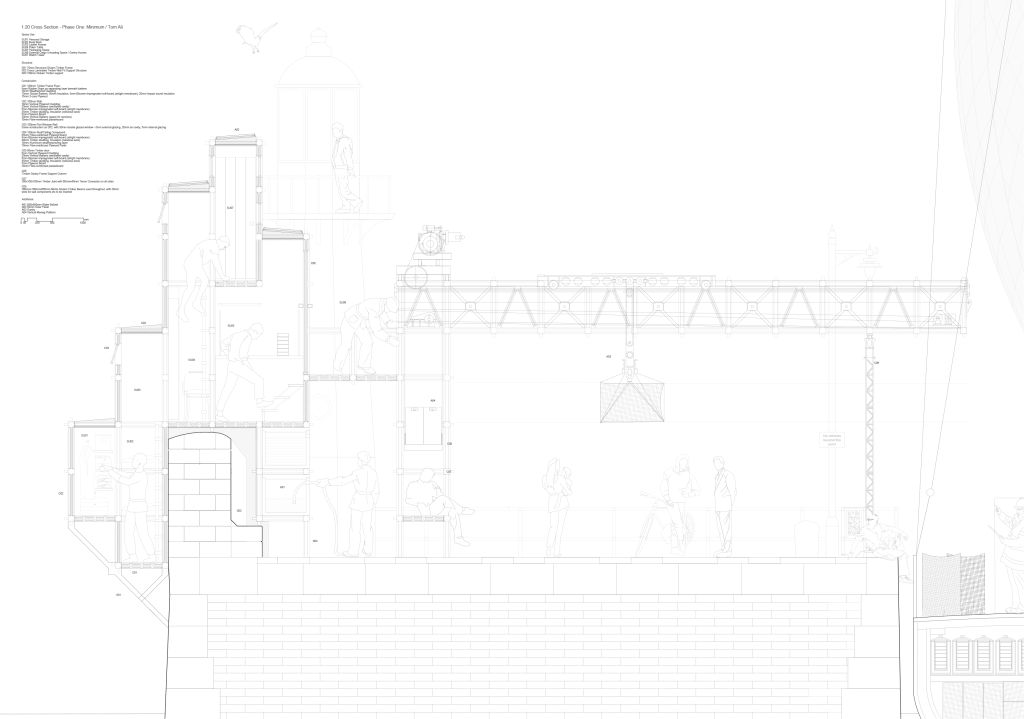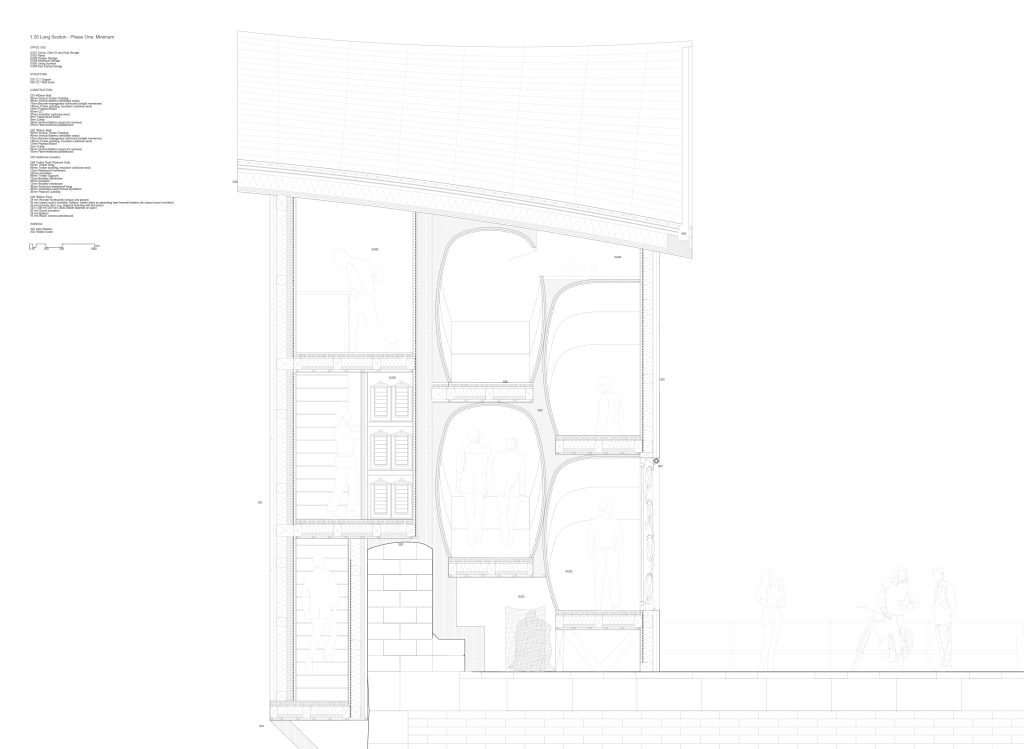Tom Ali
MECHANICAL FORAGING:
Laver Seaweed Farm, Factory and Educational Eatery.
Seaweed is a natural product with incredible properties that is starting to be utilised increasingly in today’s climate; with local offshore farms beginning to sprout up in Cornwall, the Par Horticultural Seaweed Centre is both a processing plant for horticultural seaweed products and a community space for locals and tourists alike. While distributing these amazing products across the country it was also important to ensure that the project also gave back to the community, with spaces for events, a beautiful garden to enjoy and tourist attractions to experience; bringing people together in Cornwall and providing a new route for income in one of the most impoverished counties in England. Each “wing” of the dock represents the two areas of both ‘production’ and ‘community,’ combining in their use and processing of seaweed.
Mechanical [adjective]: (of an action) done without thought or spontaneity; automatic.
Foraging [verb]: to go from place to place searching for things you can eat.
Rather than going from “place to place”, this project seeks to bring typically foraged produce together in one place where it can be produced “automatically”, enabled by efficient design. The key focus and outcome is one product: dried laver sheets (commonly known as nori).
The project includes a seaweed hatchery, an off shore seaweed farm, a factory to wash, dry, process and package the seaweed and an extensive landscape of farming land and allotments – combining to form a working mechanism.
Rather than removing thought as in the production side, visitors to the project embark upon a thought-provoking eating experience. Through a curated seasonal menu that champions laver seaweed, with dining methods and locations mirroring the production stages, visitors are educated on where their food comes from, gaining reusable knowledge on foraging, farming and eating seaweed and other wild plants.
The project also reflects the versatility of seaweed. Two very different products, like food and furniture, have processes with their own paths that meet at points of overlap. This overlapping of processes is reflected throughout, from the curved sculptural form to the intertwining of the nori production and visitor journey.
Email: tomaliuk@hotmail.com
MINIMUM & WITHIN
Introduced in the heart of Reading Town, Hogmanay, the Scottish celebration of New Years, brings a large infusion of culture and festivity to the local area. Cock-a-Leekie soup, being an integral cuisine of the Scottish, accompanies the festivities. The influx of Hogmanay culture, introduced by the arrival of the Soup Facility, will indulge Reading in a host of traditions that seek to bring people together to celebrate the New Year and the fresh start that follows midnight. On New Year’s Eve in Reading, the public are invited to join in the activities, including; farming the ingredients for the soup, trying the soup, setting Juniper branches alight at midnight, Ceilidh dancing, drinking homemade Gin, and the chance to watch as the chefs produce the soup from raw ingredients on site.
Cock a Leekie , Scotland, Timber, Homemade, Feathers, New years
Phase 1
This project aimed to create a dismountable cargo unloading bay for ships docking in St Ives, Cornwall. I developed upon the brief by seeking to form a modular, stackable construction system made from timber that aimed to be as small as possible, being designed specifically for the sizes of my selected cargos – cocoa, oil, beer and cheese. This resulted in an efficient project that can be placed in various locations.
Phase 2
Phase 2 built upon phase 1, this time a more permanent cargo unloading project. Again built from timber, this project was designed around a seaweed drying wall and 40 metres of ramp. The design seeks to enclose inhabitants within the ramp space, before unveiling their surroundings at specifically selected rest and end points.


